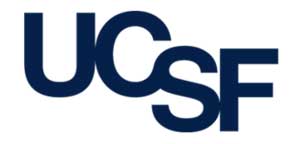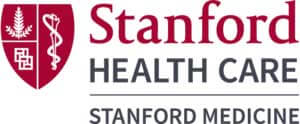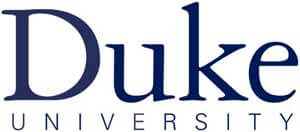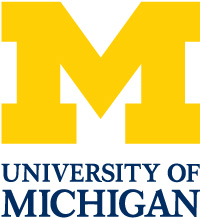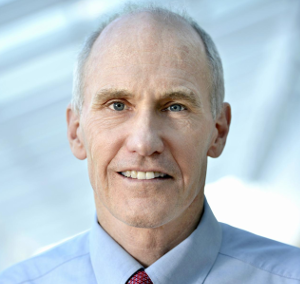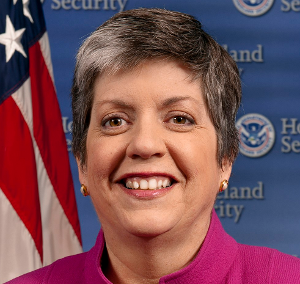We had a chance to sit down with Dr. Simon Kos, MBBS, BSC(MED), MBA, Chief Medical Officer, Microsoft who will be speaking at our upcoming PMWC 2018 Silicon Valley conference this coming January. He shared with us his views on the biggest issues of the current healthcare systems, what we can learn from other industries, what technology trends will help innovate our current model of care, and what role Microsoft will play.
To learn more about the different technology sessions, including the many AI and machine learning sessions planned for PMWC 2018 SV, see the full agenda here. This includes, but is not limited to an AI Company Showcase session which allows presenting companies to display their latest developments and innovations in the critical areas of data-driven patient care, population health, healthcare process automation, or AI-enabled drug discovery and development.
Q: What are some of the biggest issues of the current healthcare system, and how can we overcome them?
A: There is significant opportunity to transform healthcare systems from solving the problems of yesterday – reactively treating sickness in hospitals – to focusing on modern challenges like proactively addressing life style related chronic disease. Managing disease in home and community settings can maximize quality of life for patients as well as contain costs for health systems. Technology has an important role to play in this healthcare transformation. Specifically, technologies that engage and activate patients, empower providers to team effectively, enable better use of data through analytics and AI, and drive innovation and new models of care.
Healthcare systems can now take advantage of more personalized treatment capabilities enabled by technology transformation. In the past people received treatment on the law of averages. Now there is more granular data to customize treatment at a personal level. The industry is at the stage of using this granular data and applying advanced analytics to understand how patient populations respond. There is also technology to start producing tailored therapies based on the output of advanced data analysis – whether it be pharmaceutical choice based on genetic typing, or digital therapies based on demographic propensity to respond.
A good example of this personalization transformation is the early days of automotive manufacturing. In the beginning, standardized vehicles were rolling off the assembly line, everyone got the same car. Then, consumer expectations evolved and drove demand for a diverse marketplace of vehicles that cater to a variety of different needs. The vehicle you buy today differs depending on where you want to drive it, how much you drive, how many passengers you take, and a raft of other considerations. We have the relevant data on our patient populations to be able to profile them to this same extent, and we if we connect the dots to medical outcomes we can figure out what works and for whom. This is the beginning of personalized healthcare, which includes but is bigger than precision medicine.
Q: What could healthcare learn from other industries that have successfully adopted new technologies?
A: Certainly other industries have successfully pioneered technologies that health can potentially adopt without the risk. Banking and retail are great examples of how to use analytics on customer data to provide tailored and useful insights. Service industries like ride hailing and person-to-person travel booking do fabulous jobs of empowering the consumer with both information like ratings and action capabilities like tools to book and schedule. Manufacturing is heavily instrumented with connected sensors that help predict when machines and equipment need maintenance.
Q: What are some of the technology trends that will impact healthcare and innovate our current model of care to the better and how? What role will Microsoft play?
A: Interoperability: Presently our health system is characterized by a feudal patchwork of proprietary information systems that do not share information. Going forward, sharing information seamlessly and securely across these systems, and using integral technologies like EHRs as a platform upon which to develop new applications, will be more commonplace. Microsoft is supporting standards like FHIR that make this possible, as well as providing partner programs that allow the next generation of software developers to become the solution providers of tomorrow.
Artificial Intelligence: With computers now capable of learning, the massive volume of data that exists today and will be created in the future can be analyzed to drive better outcomes for people – from medical wearables to genomics. Microsoft is democratizing artificial intelligence, with development kits and cloud hosting, enabling scale of this once premium technology into democratized and mainstream use-cases. Artificial intelligence is already being applied to avoidable read missions, population health risk models, medical insurance fraud, image and video interpretation and more.
Mixed reality: The ability to visualize complex three-dimensional structures using 2D abstractions has challenged everyone from medical students to neurosurgeons. Now with holographic interactive computing going mainstream with devices like Microsoft HoloLens, use-cases like anatomy training, procedural simulation, surgical assistance, virtual ultrasound and even holographic doctors via telehealth are popping up daily. This has the potential to be the next revolution in computing interaction, a more natural experience characterized by gaze, voice and gesture control.
Q: How can we improve communication between acute care and primary care, the practitioner, and the patient population? What type of technologies will have a big foreseeable impact?
A: There has historically been an asymmetry of information between care providers and people. The historical paradigm is that doctors and health organizations are keyholders of information, and patients have to trust the advice they are given. That’s changing, and more organizations are paying attention to the patient experience. What started as simple patient infotainment in hospital is now stretching to an engaging experience that can start with pre-habilitation ahead of a hospital stay, an interactive acute visits where patients aggregate results, correspondence, instructions into their personal record, and those records travel with them after their stay, as a medium for ongoing communication with caregivers, or to share it with others.
Another fascinating area is health chatbots. People are already turning to the un-curated web for first line medical information and guidance. Tapping into this demand, replacing the top search results with information from a trusted medical source, and being able to make this actionable, by suggesting the next step and urgency, or navigating care plans, will start to address how complex it is to navigate the health system.
Q: How can we improve collaboration between medical providers and technology providers?
A: It wasn’t long ago that EHR initiatives were IT projects, where technology fit and adoption suffered. Increasingly, clinicians are taking steps toward clinical informatics, with the formalization of positions like the CMIO/CNIO and clinical informatics being a US board certified sub-specialty. Similarly, IT departments are engaging clinicians earlier, even hiring them for their ability to inform the IT process or facilitate change management. That blurring of traditional boundaries is in turn characterizing the healthcare IT industry, and forums that allow these groups to come together and share a common experience are important. Clinicians need to learn to appreciate that technology doesn’t always have a randomized controlled double blinded study to definitively prove efficacy, but that doesn’t prevent them from getting involved in innovation. By contrast, technologists need to learn to speak the language of value and outcomes, rather than technology speeds and feeds.
The Precision Medicine World Conference (PMWC), in its 17th installment, will take place in the Santa Clara Convention Center (Silicon Valley) on January 21-24, 2020. The program will traverse innovative technologies, thriving initiatives, and clinical case studies that enable the translation of precision medicine into direct improvements in health care. Conference attendees will have an opportunity to learn first-hand about the latest developments and advancements in precision medicine and cutting-edge new strategies and solutions that are changing how patients are treated.
See 2019 Agenda highlights:
- Five tracks will showcase sessions on the latest advancements in precision medicine which include, but are not limited to:
- AI & Data Science Showcase
- Clinical & Research Tools Showcase
- Clinical Dx Showcase
- Creating Clinical Value with Liquid Biopsy ctDNA, etc.
- Digital Health/Health and Wellness
- Digital Phenotyping
- Diversity in Precision Medicine
- Drug Development (PPPs)
- Early Days of Life Sequencing
- Emerging Technologies in PM
- Emerging Therapeutic Showcase
- FDA Efforts to Accelerate PM
- Gene Editing
- Genomic Profiling Showcase
- Immunotherapy Sessions & Showcase
- Implementation into Health Care Delivery
- Large Scale Bio-data Resources to Support Drug Development (PPPs)
- Microbial Profiling Showcase
- Microbiome
- Neoantigens
- Next-Gen. Workforce of PM
- Non-Clinical Services Showcase
- Pharmacogenomics
- Point-of Care Dx Platform
- Precision Public Health
- Rare Disease Diagnosis
- Resilience
- Robust Clinical Decision Support Tools
- Wellness and Aging Showcase
See 2019 Agenda highlights:
- Five tracks will showcase sessions on the latest advancements in precision medicine which include, but are not limited to:
- AI & Data Science Showcase
- Clinical & Research Tools Showcase
- Clinical Dx Showcase
- Creating Clinical Value with Liquid Biopsy ctDNA, etc.
- Digital Health/Health and Wellness
- Digital Phenotyping
- Diversity in Precision Medicine
- Drug Development (PPPs)
- Early Days of Life Sequencing
- Emerging Technologies in PM
- Emerging Therapeutic Showcase
- FDA Efforts to Accelerate PM
- Gene Editing / CRISPR
- Genomic Profiling Showcase
- Immunotherapy Sessions & Showcase
- Implementation into Health Care Delivery
- Large Scale Bio-data Resources to Support Drug Development (PPPs)
- Microbial Profiling Showcase
- Microbiome
- Neoantigens
- Next-Gen. Workforce of PM
- Non-Clinical Services Showcase
- Pharmacogenomics
- Point-of Care Dx Platform
- Precision Public Health
- Rare Disease Diagnosis
- Resilience
- Robust Clinical Decision Support Tools
- Wellness and Aging Showcase
- A lineup of 450+ highly regarded speakers featuring pioneering researchers and authorities across the healthcare and biotechnology sectors
- Luminary and Pioneer Awards, honoring individuals who contributed, and continue to contribute, to the field of Precision Medicine
- 2000+ multidisciplinary attendees, from across the entire spectrum of healthcare, representing different types of companies, technologies, and medical centers with leadership roles in precision medicine

